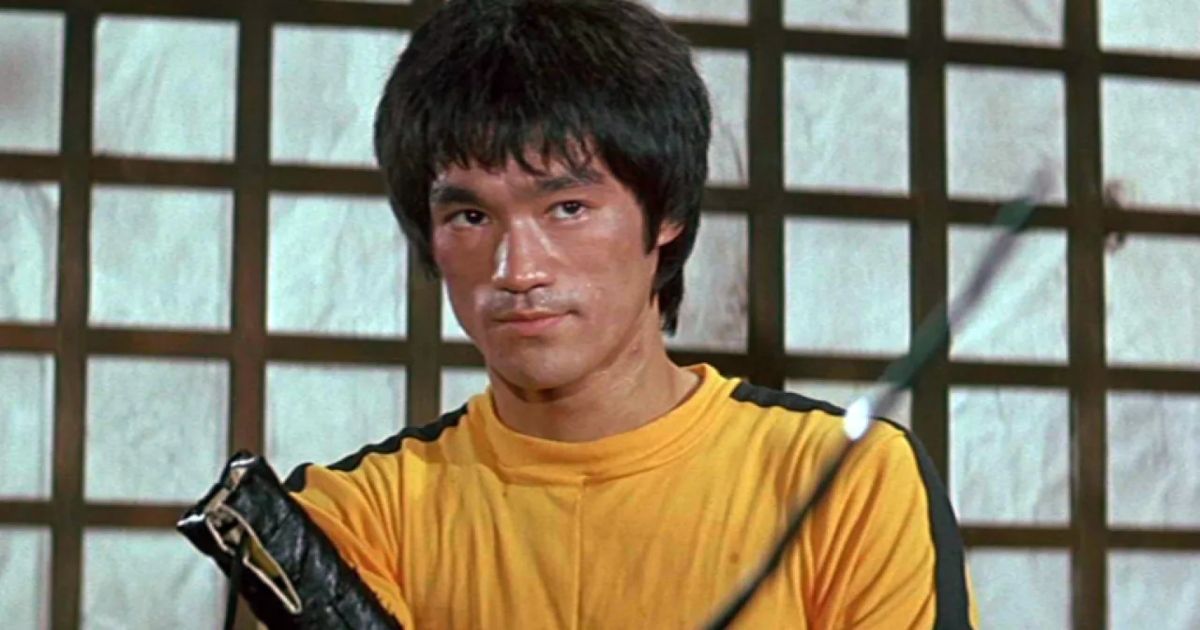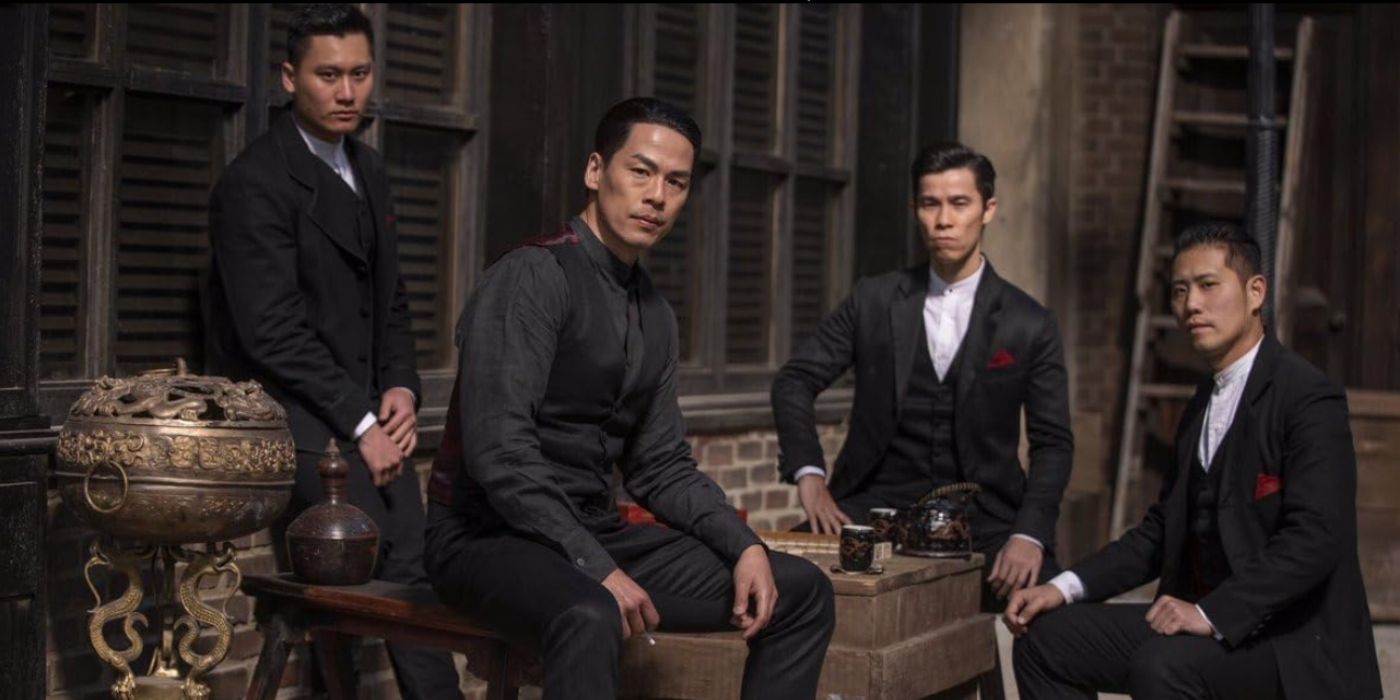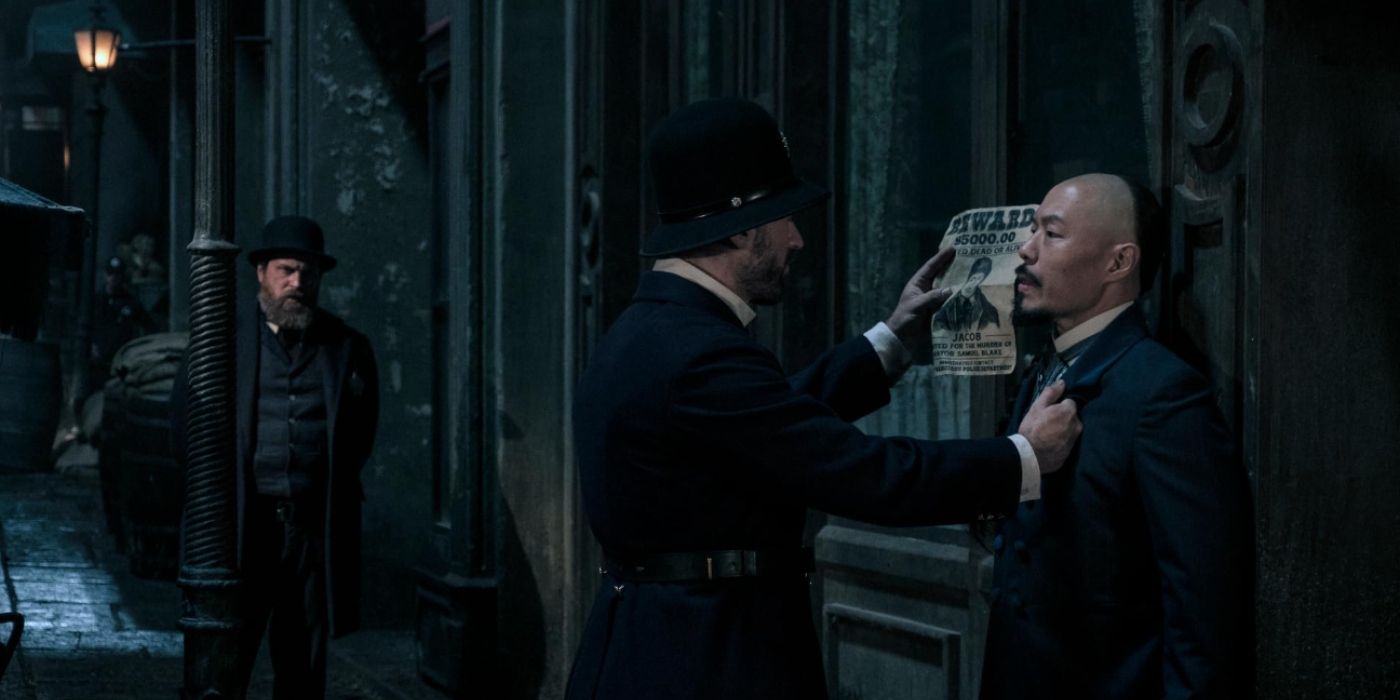Summary
- Bruce Lee’s dream show now transitions to Netflix, where a fourth season remains a possibility.
- “Warrior” intertwines Chinese immigrants’ personal stories with those of the Tong Wars and the Gold Rush era.
- A blend of martial arts and Western genres, “Warrior” fictionalizes a turbulent history of the Chinese journey in America, albeit with some inaccuracies.
The action drama Warrior has faced a rocky path to production over the years, and despite positive reception from most critics and viewers, the show is still struggling uphill. According to a December 2023 report by Variety, the show will still air on Cinemax, with any new episodes to debut on Netflix, after a cancelation nearly ended it altogether in 2023 after three seasons. However, the action series has not yet been renewed. Among the victims of the transfer is regular Andrew Koji, who had other obligations. The shift in the cast will require a new direction in the plot as a fourth season is up in the air.
Should that scene of Ah Sahm swinging nunchucks appear very familiar to a certain scene in Enter the Dragon — and for whatever reason you fast-forwarded through the opening credits — the show’s connections to Bruce Lee indeed run deep. The show’s original script was intended as a vehicle for him in the early seventies as he attempted to break out of the sidekick persona he had established in The Green Hornet as the overpowered Kato. Drawing on traditions of ancient Chinese literature for his aborted weekly TV adventure, Warrior tells a uniquely American story and is notable for starring an ensemble of Asian actors.
Focusing on the Tong Wars that raged across Chinatown in post-Civil War-era San Francisco, immigrants from both East and West flood into the port city. The program’s portrayal of corrupt politicians, dirty cops, racial discrimination, slave trading, “flying squads,” targeted assassinations, mob wars, and segregation is true in spirit, if heavily dramatized. However, no, Warrior is not entirely based on any actual individual or event but rather combines different personalities and groups to inform the show’s tone and background, and those real personalities featured bear little resemblance to their real-life counterparts.
The Unfilled Dream
With his reputation growing, Bruce Lee penned his own pitch in 1971, but he’d have to wait. Hollywood was not ready for an Asian lead character, nor all the social baggage that it would carry in tow. Filming a variety of other movies before his very early death in his thirties, he would pass without ever witnessing his vision come to fruition, not holding any grudges. Lee said in interviews he only wanted to be recognized as an actor and creator, admitting “the word ‘superstar’ really turns me off.”
Having grown up not only in the fighting community but also in Hong Kong in the ’40s and ’50s, Lee was immersed in the wuxia tradition. The wuxia genre, encompassing many niche calcifications, is a catchall for all martial arts and action works of fiction in the classical period of China before the nineteenth century. These movies, pulp novels, and books rely on downtrodden heroes overcoming great odds against great evil, pummeling the bad guys into submission in a power fantasy that appeals across cultural or linguistic barriers. The laconic hero in Warrior fits the mold, uttering the line “It didn’t have to be like this” before a particularly pivotal brawl in Season 3, always on the defensive.
The notes he made for the narrative went unnoticed for years, the project dormant for over four decades until Cinemax put the idea into production. The fantasy of a cast of primarily Asian actors, in a period piece no less, remained just that for years, a fantasy. An earlier treatment was shot down by Warner Brothers in 1971, the studio later opting to pursue their own martial-arts-themed drama, Kung Fu, starring David Carradine in the role of an Asian guy. However, with the blessing of executive producer Shannon Lee, the daughter of the deceased martial artist Bruce Lee, the scrapped idea eventually came to life on the small screen.
The Tong Wars Take Their Toll
In interviews, Shannon Lee expressed that Warrior “references all these familiar genres that people love.” It would not be a surprise if “Wuxia in the Wild West” was the elevator pitch that got this made. But is it accurate? Taking San Francisco as its backdrop, Warrior fuses two very distinct genres into one, one part martial arts epic and one part Western. For those new to the show, it’s not dissimilar to Deadwood, albeit with a focus on fist-fighting rather than witty rejoinders.
Ah Sahm’s (Andrew Koji) mission in the United States is sparked by his journey to reconnect with his sister, a new immigrant to the city, but he finds himself embroiled in the middle of a battle royal, the tongs (Chinese street gangs), police, and citizens all at war with the Chinese immigrants and often each other. We will spare any spoilers, but the drama escalates as Ah Sahm finds himself mired in alliances, jostling for control of San Francisco’s Chinatown underworld and opium dens. The secretive organizations were aided by the language barrier and the reluctance of many Chinese to rat out their own to a police force they did not fully trust, for reasons that will become painfully obvious.
The first mass migration of Asians to the United States was shortly before the Civil War when tens of thousands of Chinese men came across to work on the Transcontinental Railroad. They stayed, usually packed together in whatever slums they could find refuge, in neighborhoods that became synonymous with vice of all kinds, usually gambling, brothels, and saloons. Unfortunately, they were as often victims of the paranoid native-born Americans as they were the tongs. In this modern interpretation, the Chinese mafiosos are depicted in the form of the fictionalized Fung Hai, Long Zii, and Hop Wei tongs. Inevitably, Warrior turns into a larger saga about not just a single family, or crime syndicate, but the opium trade in general.

Best Bruce Lee Movies, Ranked
Despite his short-lived acting career, Bruce Lee is one of the most celebrated and respected Asian actors in Hollywood history.
The Complex History of Chinese Americans
While not historical in a specific sense, it does incorporate some historical figures and events to lend it a greater sense of authenticity, and it’s the very sort of subject matter that made Warner Brothers pass on this fifty-something years ago. The distrust and bigotry against Asians led to some cases of rampant attacks and killings of Chinese people in the Old West period, yet that generally gets glossed over in depictions in the media. Though the worst crimes actually took place not in San Francisco, but in the city of Los Angeles, the site of the worst mass lynching in American history. The Los Angeles Massacre of 1871 was a retaliation for a shootout in the Chinatown section of the city between rival Chinese organizations.
Olivia Cheng’s Ah Toy and her girl-power-infused portrayal should not be taken at face value. Alas, Ah Toy is not really a heroic figure at all. Though the character is based on a real madam in the Gold Rush era, the fictional character solves most of her issues by stabbing them. The historical Ah Toy was far more hands-off and calculating. She used a corrupt court system to her advantage and relied on her connections to profit from what can only be described as a sex-slave-trafficking ring, buying girls as they got off the boat, institutionalizing the exploitation of Asian women.
Putting the whitewashing aside, the show does make one crucial homage to real-life events. In this time period, San Francisco witnessed a secretive pact between a tong leader known as “Little Pete” and the Democrat power broker “Blind” Buckley. As The San Francisco Chronicle covers in great detail in their 2013 deep dive, the boss (real name Fung Jing Toy) and his “hatchet son” (Lee Chuck) became so aware of assassination attempts that they took to wearing 35-lb metal armor for protection, such was the risk. While the writers don’t set out to make a faithful docudrama, and sacrifice realism for the sake of choreographed fights and glamor shots (some of the actors wearing suspiciously modern clothing), they do integrate a lot of real-world context into the show to lend it a more believable vision of California at the time previously unseen in other Westerns.






